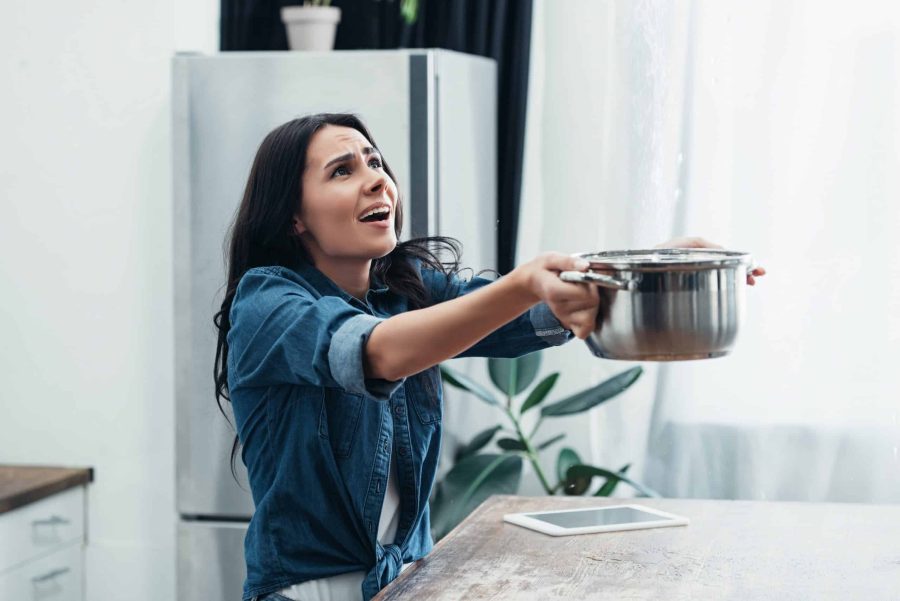As winter’s cold grip tightens around homes, the quest for warmth becomes paramount. The cold drafts sneaking into living spaces lead to discomfort and can significantly inflate energy bills. Homeowners are often unaware of the myriad of sources from which these chilly invaders infiltrate their sanctuaries. This guide comprehensively explores draft-busting hacks designed to keep homes toasty even during the most frigid months. It’s more than just staying warm; it’s about creating an energy-efficient haven.
Contents
Understanding Home Drafts

Drafts, sometimes elusive, always unwelcome, have a knack for creeping into homes from a variety of unsuspecting places. While most homeowners can easily identify the gust of cold air from an improperly sealed window or door, they may overlook other culprits. Chimneys, attic hatches, and even electrical outlets can be entry points for cold air.
The true consequence of these drafts extends beyond the immediate discomfort they cause. Each draft is a conduit for heat to escape, directly impacting the energy efficiency of a home. The harder heating systems have to work to maintain warmth, the higher the energy consumption, leading to escalating costs during peak winter months.
Windows: Your Home’s Biggest Culprit

Windows, beautiful as they are for letting in natural light, often play a major role in the chilling tales of most homes. Single-paned windows, in particular, are notorious for their inefficiency, allowing the inside warmth to readily escape while welcoming the cold with open arms.
But despair not! A few straightforward hacks can drastically improve the situation. Consider window film insulation, which acts as an invisible barrier, retaining heat. Weatherstripping is another efficient way to seal gaps around window frames, and for those small, persistent openings, caulking can be a godsend.
Door Draft Solutions

Doors, both external and internal, can betray a home’s cozy ambiance. One can often feel a discernible temperature difference near doorways, especially if they’re old or poorly insulated. The space underneath doors and the areas surrounding them are frequent culprits.
In the battle against door drafts, homeowners have a number of handy weapons at their disposal. Draft snakes, those long tubes of fabric filled with insulating materials, can be strategically placed to block gaps. For a more permanent solution, replacing aged door thresholds or using weatherstripping tape can seal off those pesky drafts and help maintain a home’s desired temperature.
Fireplace and Chimney Care

For those who revel in the warmth of a blazing hearth, the fireplace, ironically, can be a significant source of drafts. When not in use, chimneys act as massive tunnels, ushering in the cold from the outside world. Even when the fire is roaring, improper seals can allow cold air to sneak in from the sides.
Luckily, solutions abound for the drafty fireplace dilemma. Chimney balloons, inflatable devices designed to block the flue when the fireplace isn’t in use, are both effective and easy to install. Meanwhile, fireplace draft stoppers can be placed in front of the fireplace, ensuring the warmth generated doesn’t go to waste.
Securing the Attic and Roof

The attic, that often-overlooked space above, can be a primary source of heat loss. Most homeowners underestimate how much warm air rises and escapes through poorly insulated attics. Not to mention, recessed lights and roof vents, though essential, can become inadvertent entry points for cold drafts.
Awareness is the first step toward rectification. By insulating attic doors, one can prevent significant amounts of heat from escaping. Regularly inspecting roof vents and recessed lights and even looking for roof leaks can safeguard a home from the dual threats of drafts and potential water damage.
Floors and Basements: Often Overlooked Sources

Cold feet are often a clear indicator of drafts coming from below. Ground-level floors, especially those without carpets or rugs, readily conduct cold from the ground, making living spaces less comfortable.
Basements, too, play a role in this chilling scenario. Those old basement windows or tiny cracks in the walls can be gateways for drafts. Investing in quality rugs, sealing basement windows, and diligently filling in wall cracks can make a marked difference in a home’s warmth and comfort levels.
Innovative Solutions for Modern Homes

As technology advances, the tools available to combat drafts have evolved significantly. Gone are the days when homeowners solely relied on physical barriers. Modern homes now benefit from smart technologies and innovative materials to ensure maximum warmth.
Smart thermostats, for instance, adjust heating based on real-time needs, preventing energy wastage. Infrared thermography, a technique using infrared imaging, allows homeowners to detect drafts they can’t feel or see. Furthermore, the advent of modern insulation materials offers enhanced protection against the biting cold.
The Perks Of Going Draft-Free
In the quest for a draft-free home, the benefits reaped extend far beyond physical comfort. Every step taken towards sealing a home from drafts translates to tangible savings on energy bills. A draft-free home is not just a cozy haven; it’s a testament to energy efficiency and sustainability.
Furthermore, the environmental implications are significant. A home that requires less energy to heat reduces its carbon footprint, contributing to the global effort against climate change. Thus, draft-busting hacks are not just for personal comfort; they are a stride toward a sustainable future.
The Bottom Line
Embracing a draft-free home is more than a seasonal endeavor; it’s a commitment to year-round comfort, efficiency, and sustainability. As homeowners embark on this journey, they’ll discover the profound impact of these hacks – from lowered bills to a reduced carbon footprint. Every seal, every strip of tape, and every insulation effort contributes to a cozier, more eco-friendly living space. Winter may come with its icy grip, but with these strategies in place, homes can stand as warm bastions against the cold.



